April Wallace
awallace@nwaonline.com
When Joli Livaudais was a graduate student of photography, her son was 5 years old. So she changed her bathroom light to a red bulb and stuck him in the bathtub while she developed images. That way, they could both have fun.
“I fell in love with photos in the dark room,” says Livaudais. “There’s something really wonderful about being there — the red light and the sound of water — it’s a wonderful feeling. I’m not sure I would have (fallen in love with it) if I’d been raised on digital.”
Livaudais is an artist and associate professor of photography in the University of Arkansas at Little Rock’s Department of Art and Design.
Her current installation, “All That I Love,” is 1,500 origami scarab beetles and blades of grass made from photographs, most of which she took herself. It’s all part of “Women to Watch: Paper Routes,” a statewide traveling exhibit that opened Jan. 13 at Fenix Arts in Fayetteville.
“It’s a good show … full of unexpected work,” Livaudais says. “The works are very, very different, but it surprised the heck out of me the first time I saw it (because it) looks like it belongs together.”
“Paper Routes” is organized by the National Museum of Women in the Arts, whose goal is to bring increased awareness to artists in less populated areas of the country.
The Arkansas committee for the organization juries every two years to select works to show around the state in an exhibition titled “Women to Watch.” This is the sixth one and features Livaudais’s installation, “Who Belongs On Our Money?” by Suzannah Schreckhise, “Rosebud Moments in Paper Planes” by Kim Brewer and “Start/Never Ending” by Linda Nguyen Lopez.
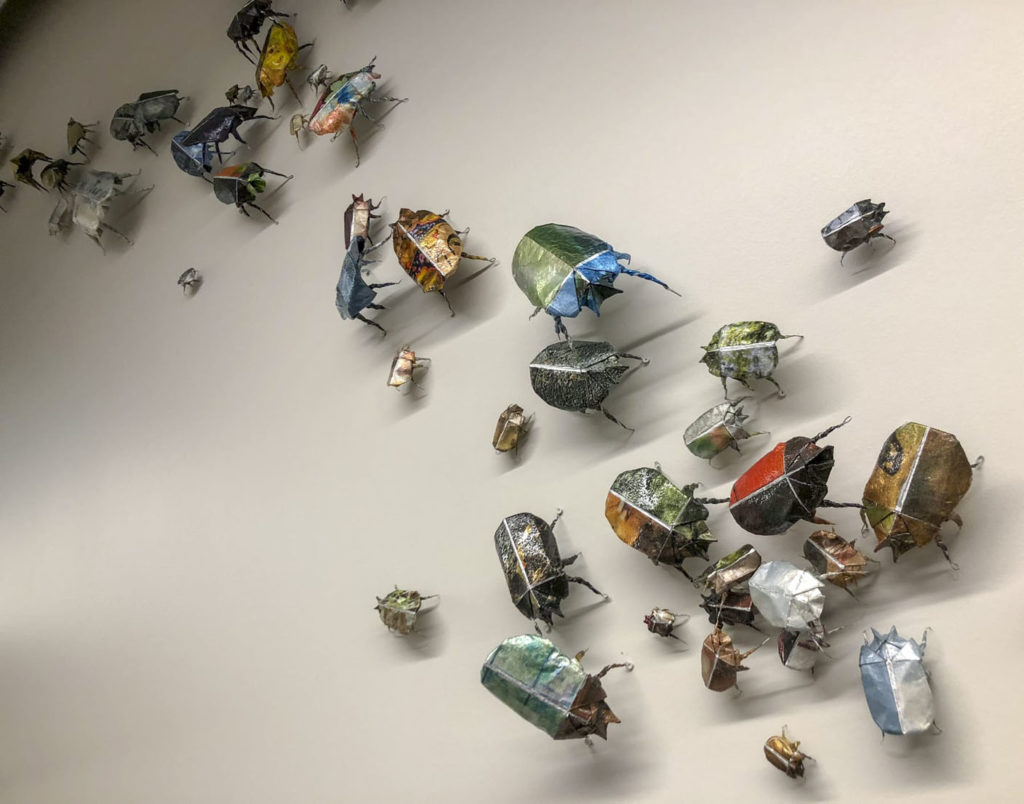
Joli Livaudais’ current installation, “All That I Love,” is 1,500 origami scarab beetles and blades of grass made from photographs, most of which she took herself. It’s all part of “Women to Watch: Paper Routes,” a statewide traveling exhibit that opened Jan. 13 at Fenix Arts in Fayetteville. (Courtesy Image) 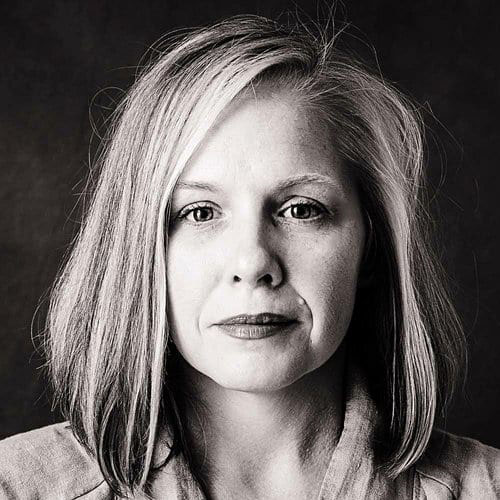
Suzannah Schreckhise 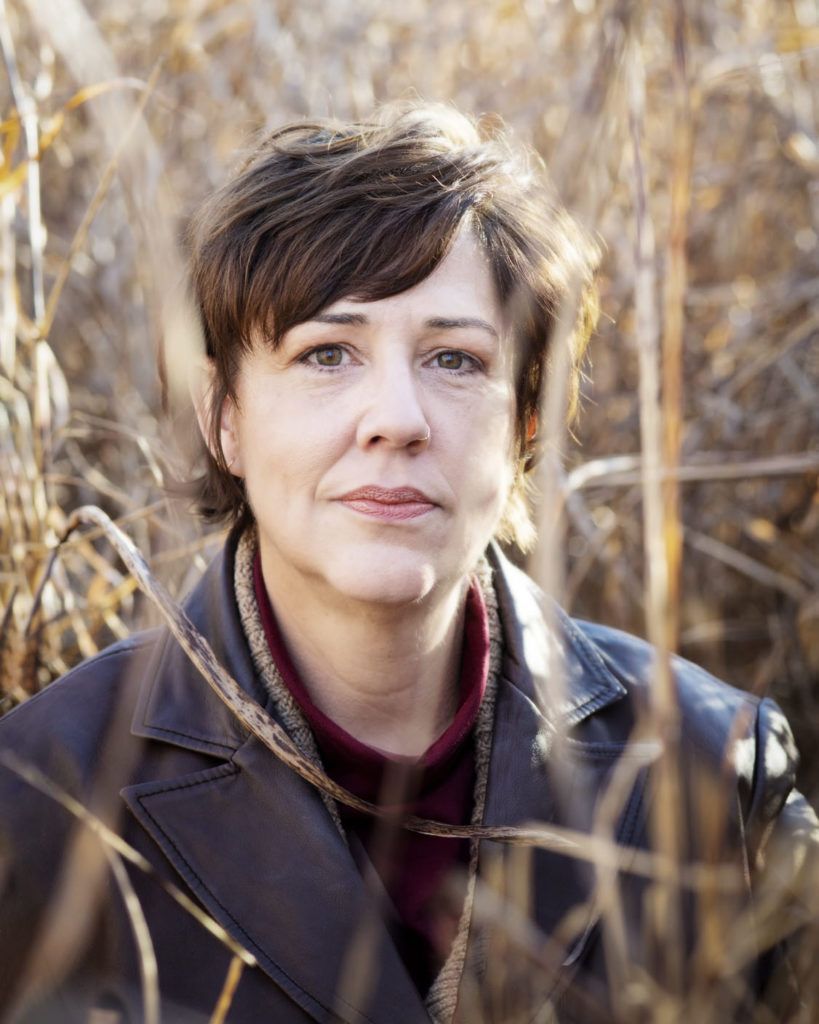
Joli Livaudais 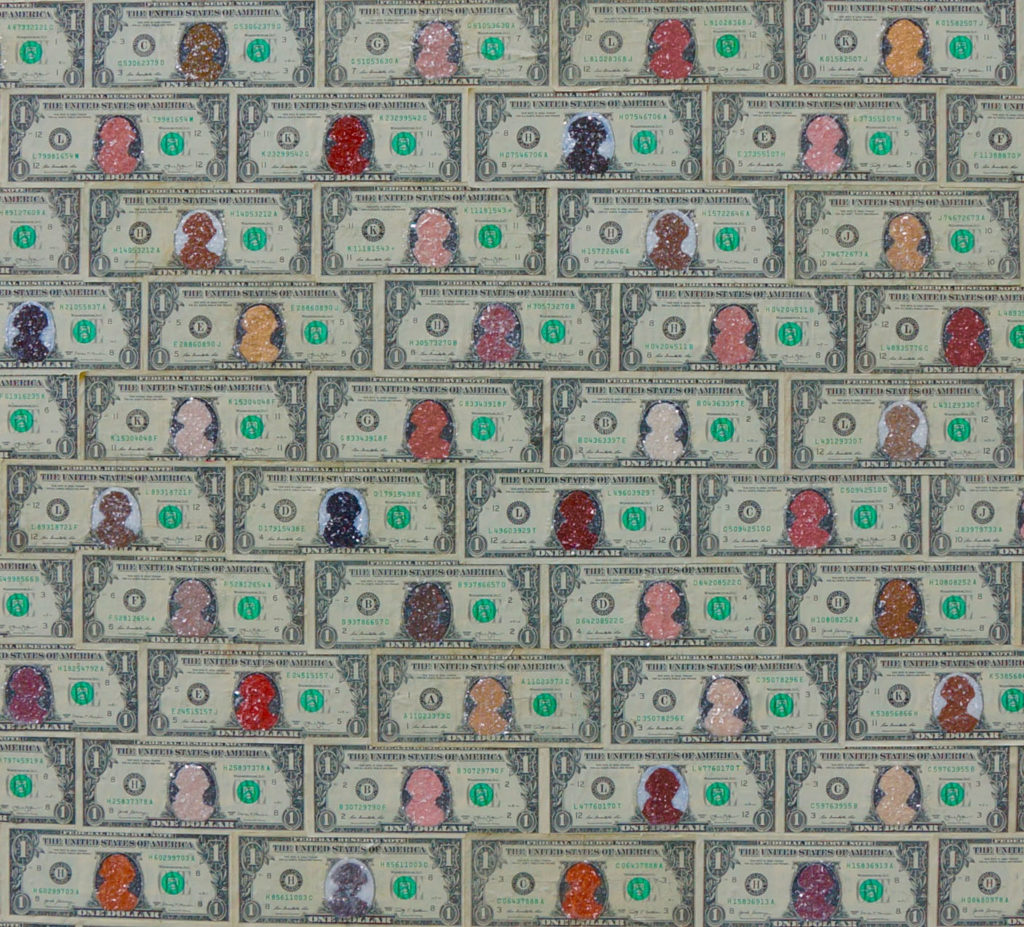
“Who Belongs On Our Money?” is a three foot by three foot stretch of dollar bills lined up together, but they’re not like the ordinary ones in your wallet. These sparkle and shine, and most importantly are missing the face of the first U.S. President. It’s a visual symbol for who holds the power in America, says artist Suzannah Schreckhise. (Courtesy Image) 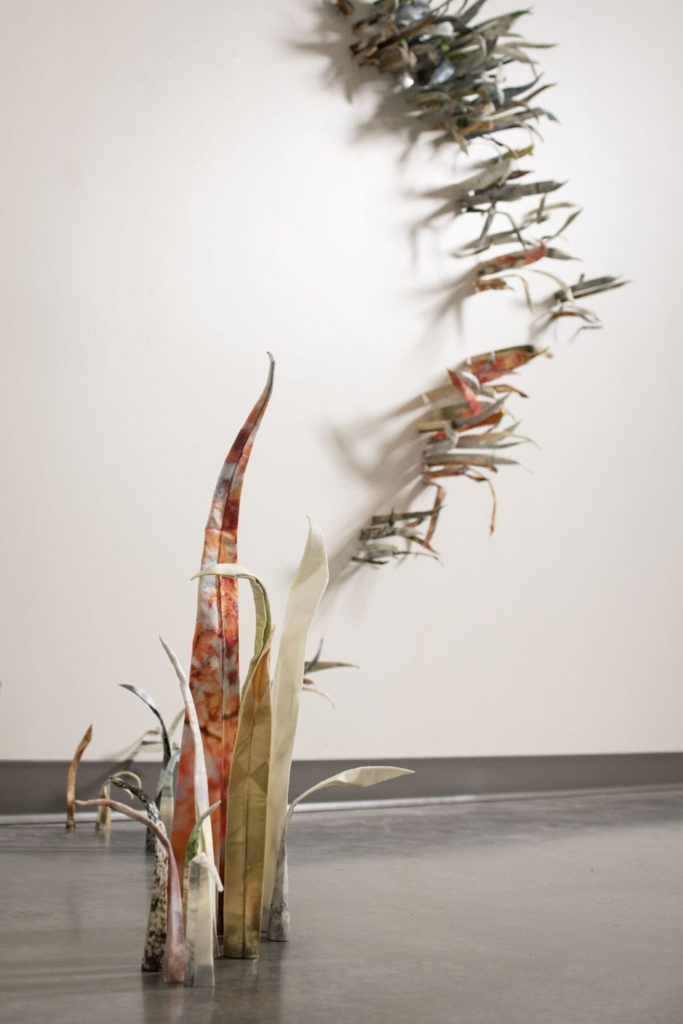
“Imperata Garden” by Joli Livaudais is also part of “Women to Watch: Paper Routes.” (Courtesy Image)
Schreckhise and Lopez are Fayetteville-based artists, while Livaudais and Brewer are from Little Rock.
“It makes me feel really supported as a woman in Arkansas to be selected,” Schreckhise says. “All the women on the committee are volunteers, and they all work so hard. There’s so much behind the scenes to get an exhibit together.”
That’s true under normal circumstances, but especially so during the pandemic, when artists may not appear in person. That means giving lectures or receptions virtually and arranging for the safe carriage of their work around the state.
Schreckhise says Mary Ross Taylor from the Arkansas committee coordinated the packaging, insuring and the arrangement of a moving company to take her work to each stop.
“Who Belongs On Our Money?” is a three foot by three foot stretch of dollar bills lined up together, but they’re not like the ordinary ones in your wallet. These sparkle and shine, and most importantly are missing the face of the first U.S. President. It’s a visual symbol for who holds the power in America.
Schreckhise felt it was important to “have a visual that shows everyone’s equal regardless of their age or skin tone, that we all belong in the U.S., and that it’s not just white men that should be making up the things that make up our country.”
The particular combination of works in this exhibit is special, Livaudais says, because the pieces “talk with each other, and they look different in every venue.” Previous stops on the Arkansas tour were Little Rock, El Dorado, Arkadelphia and Fort Smith with this as the final location.
Not only do they change in these site-specific installations, but the artists begin to be influenced by each other along the way. While setting up in Fayetteville, Livaudais says she was inspired by the way Brewer was setting up her work.
Every few years one artist from each state is selected by NMWA to show their work at the museum in Washington, D.C. Livaudais’ “All That I Love” was chosen for that honor and was displayed June 2020 through January 2021.
Making beetles by folding photographs gets at the root of Livaudais’ true fascination, which is to “push the boundaries of what a photograph is.”
“At what point is a photograph no longer a photograph?” she asks. “It’s interesting, the push and pull of what point does it break down.” You can see images on the backs of the scarab beetles and the sides of the grass.
The first time that Livaudais considered making one was in 2012 as part of her graduate work. The idea of a swarm hooked her. From its inception to now, she estimates that she’s made 5,000 beetles total and exhibited them in Louisiana, Arkansas and Texas.
Livaudais was a bit of a rare breed in graduate school, where she mostly studied a historical photographic process earlier than film, one in which you had to hand mix chemicals and paint on paper using your handmade colors. What she took away from that unique form of study was a love for interacting with the object of art.
“It was about the process, the nature of the object and how I could push that, already working with the concept,” she says. “I thought about how much more I enjoyed looking at it in person.
“The practice of making it is part of the beauty.”
Each of the 1,400 beetles in Paper Routes is made with the same pattern, which Livaudais found online. They vary greatly in size and of course overall appearance because of the photo content.
The first time she folded one, it took 65 folds and three tries. The third, successful try took her more than three hours. Now she can fashion a beetle in 35 minutes because “my hands know what to do,” she says.
The photographs she used are all things that she finds beautiful: her son, various landscapes and moments in her life that she loved and wanted to commemorate. Some she considered artwork, others were simply snapshots from trips, family photos or a sunset.
She took the pictures from a combination of cameras, some DSLR, some from film cameras, but all are printed on special mulberry paper, which is very thin. Livaudais prints her image on the paper, mounts it to aluminum foil and paints it with epoxy resin to make it tough and allow a sheen through the paper. It gives it an overall metallic look.
Back when Livaudais made the first beetle in 2012, she says the reaction she got was “that’s cool but what are you going to do with that?” For her at the time it was less about the end result and more about the process.
“Origami is a transformational form,” she says. “It’s not like painting where you add, or sculpting where you take away. You just take it, and you change it.”
Livaudais has considered it a form of meditation while folding, to think about the moment that the photographs depict, appreciate it and release it, challenging herself to not cling to things.
Once the beetles started selling and she got into the D.C. show, Livaudais knew she would want all new beetles and a larger amount of them to show. Having a long list of photos to take each day meant it stopped being the spiritual practice it had been, so she reached out to friends and family to share photos with her. About 400 of them appear in “All That I Love.” Using them brought her closer to the people who shared the images, she says, because “their moment became my moment. It was an interesting expansion of the project.”
Turning photographs into blades of grass was a much more recent addition to the exhibit, but Livaudais was inspired to make them because of their symbolism.
“What I love about grass is that it’s so tenacious,” she says. “Give grass a tiny bit of water and ground, and it will thrive. It’s hard to kill. I find that to be beautiful and admirable and during hard times, an inspiration to think of that, like humble grass we stick to it and thrive.
“The imagery we use is similar, (each of these photos are) good moments, reasons to keep going.”
__
FAQ
‘Women to Watch: Paper Routes’
WHEN — Through Feb. 26
WHERE — Fenix Arts, Millar Lodge, 150 N. Skyline Drive in Fayetteville
COST — Free
INFO — fenixfayettevilleart.com



